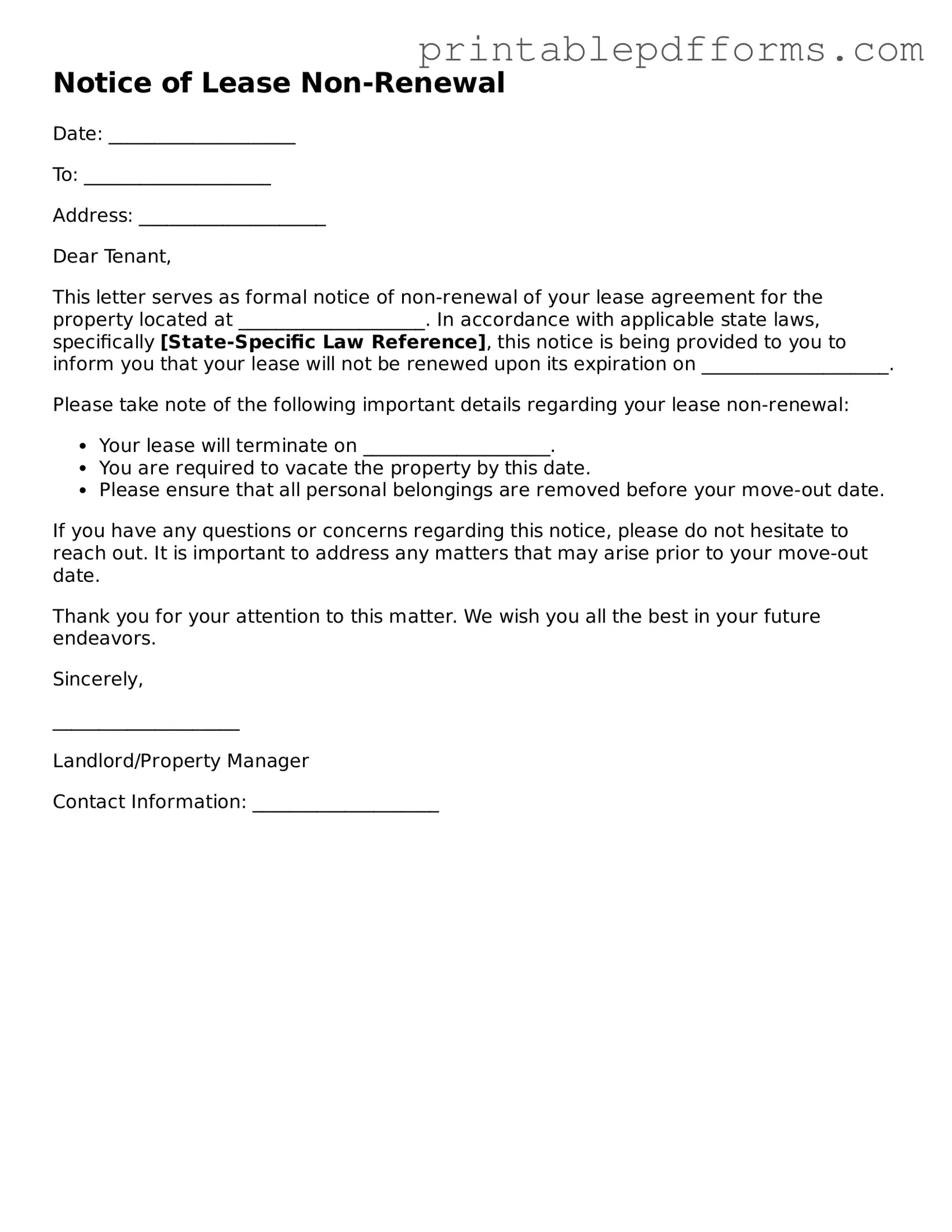Notice of Lease Non-Renewal
Date: ____________________
To: ____________________
Address: ____________________
Dear Tenant,
This letter serves as formal notice of non-renewal of your lease agreement for the property located at ____________________. In accordance with applicable state laws, specifically [State-Specific Law Reference], this notice is being provided to you to inform you that your lease will not be renewed upon its expiration on ____________________.
Please take note of the following important details regarding your lease non-renewal:
- Your lease will terminate on ____________________.
- You are required to vacate the property by this date.
- Please ensure that all personal belongings are removed before your move-out date.
If you have any questions or concerns regarding this notice, please do not hesitate to reach out. It is important to address any matters that may arise prior to your move-out date.
Thank you for your attention to this matter. We wish you all the best in your future endeavors.
Sincerely,
____________________
Landlord/Property Manager
Contact Information: ____________________
